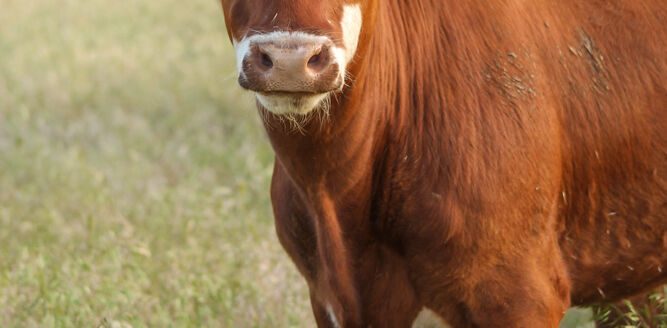Cattle producers are anxious to rebuild their herds but persistent headwinds are not making it easy, according to a recent analysis from Rabobank.
Lance Zimmerman, a senior beef analyst at the RaboResearch Food and Agribusiness team, said an oversimplification may indicate a similarity to 2014 when the herd expanded over the next five years but he warns the signals are not there.
“That was the fastest rebuild we went through in history and we’re not likely to repeat that history as we look at the next herd rebuild. We’re still not done with the liquidation yet.”
The difference from 2014 in comparison to 2023 has some similarities but the differences are significant. The country, coming out of the Great Recession in 2008-09, experienced low interest rates—long and short term—which helped the entire beef chain to expand. The prime interest rate was 3.25% in 2014 but today it is at 7.5%, he said, and those costs are felt throughout the beef chain.
Using monthly compound interest over a five-year period it means a cow-calf producer with a $2,000 bred heifer price faces an interest cost increase of $440 in an interest payment in total to rebuild this cow herd over the previous herd build up.
For an industry that is basically a break-even business over the past 30 years that is a tough pill to swallow, the analyst said.
It all comes in the heel of a lingering drought throughout much of the prime cow-calf country—and in particular the southern Plains. While he was optimistic the number of beef cows can approach 32 million head again it is several years away.
Right now the nation’s herd is an estimated 29 million head, according to the U.S. Department of Agriculture.
A lingering drought eased from 2013 to 2019 where 2023 ranchers—in many areas—are in their second or third year of enduring one, Zimmerman said.
Plus other expenses, from fuel to feed and higher pasture rents have to be taken into account. Those are likely to be persistently high for the next several years.
“There’s not a single cost that you can look at across the board for a cow calf producer today that probably isn’t higher than what it was 10 years ago. The feed bill, the labor bill, the vet bill, all of those costs have gone up in varying degrees,” Zimmerman said. “Interest is one example of a tangible cost we can grab hold to, but there’s a lot of other costs that that are competing with dollars today and really limiting the cash flow availability for a lot of these operations. And I think that’s key.”
The earliest he can see significant strides in the herd rebuild is 2025 or early 2026. If the drought eases quickly that can help but there is also the fact that many producers have been forced to sell their heifers for future processing—even if they have been receiving a good price.
Until the current liquidation rate stops, rebuilding the herd will be difficult. Also, the price of beef at the grocery store is catching the attention of consumers.
One good factor is that per capita consumption of beef, pork and broiler meat has increased from a low of 180 pounds per person per year in the early 1990s today he or she consumes about 210 pounds of protein per year today.
That has helped beef producers but Zimmerman is realistic as consumers will weigh higher beef prices, especially if pork and broiler supplies increase and that lowers the price for those proteins.
One difference, from past cycles, is foreign demand for beef continues to grow, he said. About 12% of domestic production goes elsewhere and that is a positive moving forward.
Zimmerman said the industry needs to continue to work together in a coordinated fashion.
He points as examples the Certified Angus Beef program, beef quality assurance programs, National Beef Quality Audit, Beef Checkoff and other organizations that promote beef consumption, he said. While they all exist independently they collectively work to help all segments in the industry.
A cooperative—rather than an adversarial—approach offers an opportunity to help combat headwinds. Producers at all levels are going to need to stay informed about greenhouse gas emissions and carbon footprints because major corporations have a say in the beef industry, too.
His advice is for producers to also look for ways to reduce expenses, while staying current on the markets and trends.
Dave Bergmeier can be reached at 620-227-1822 or [email protected].




